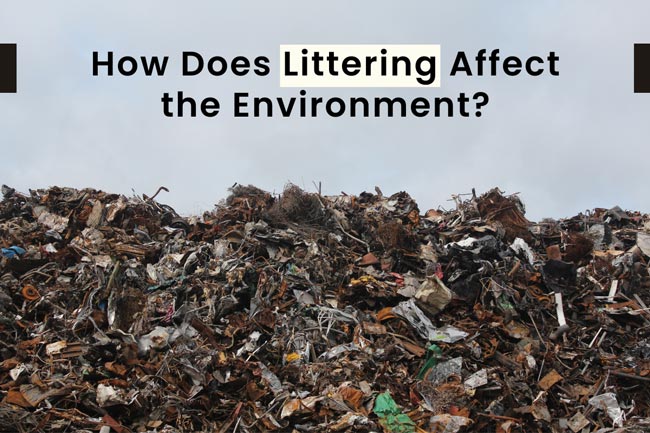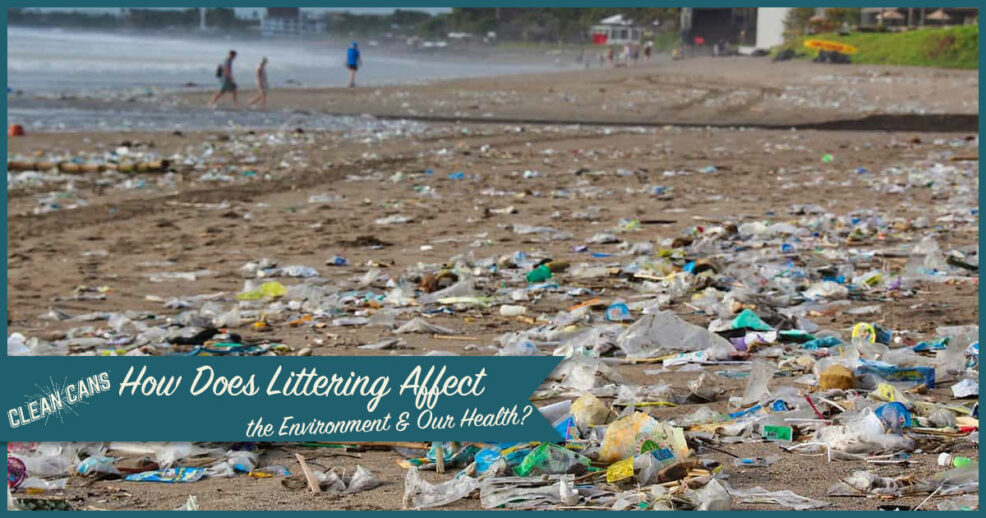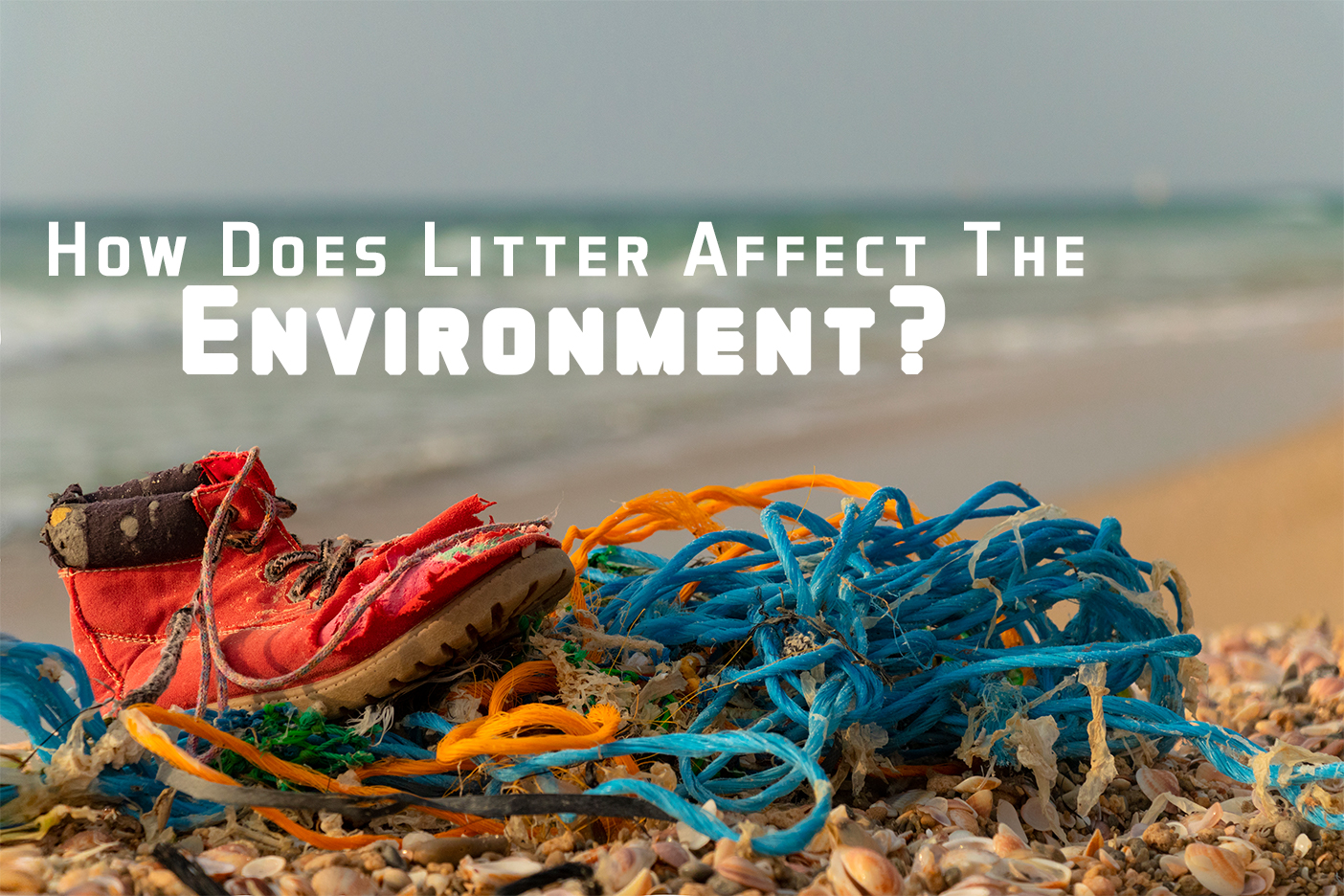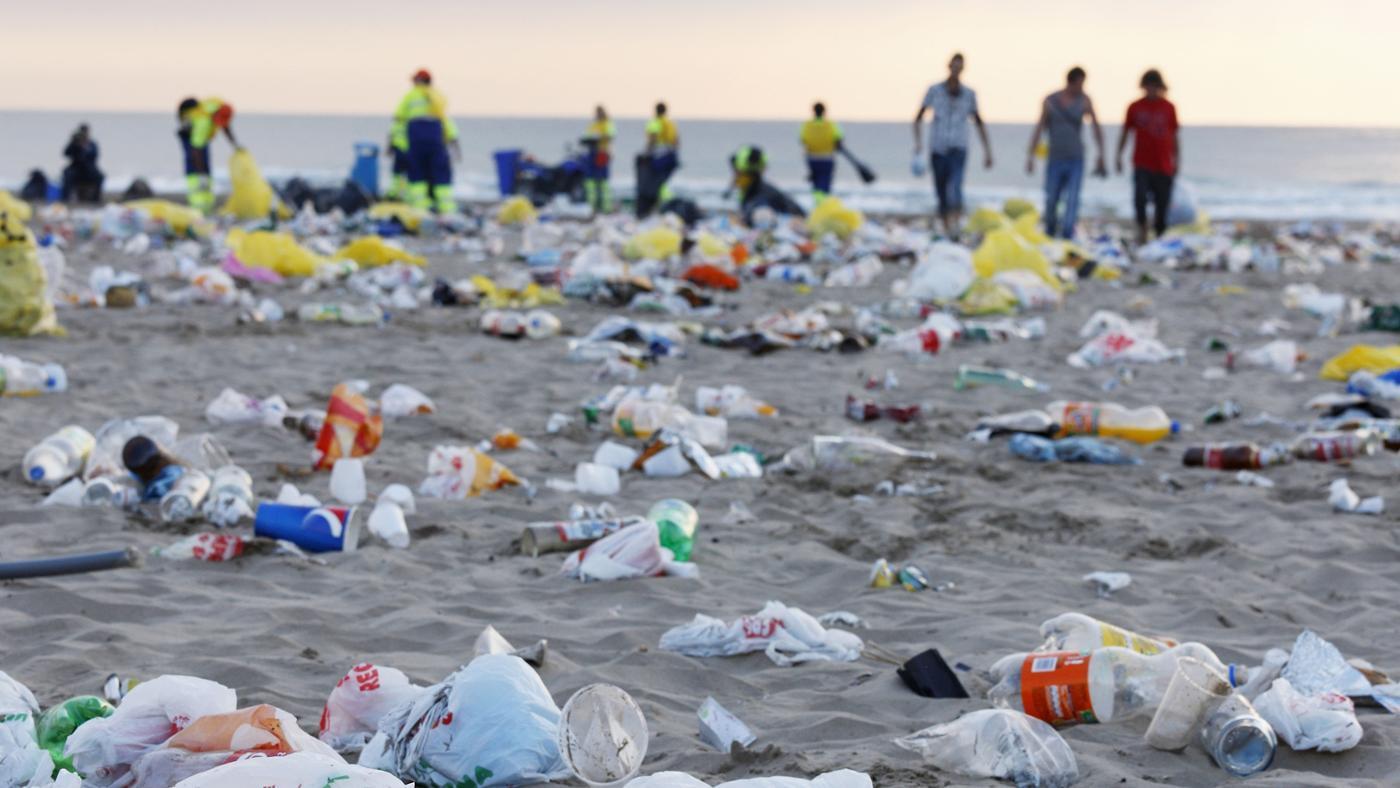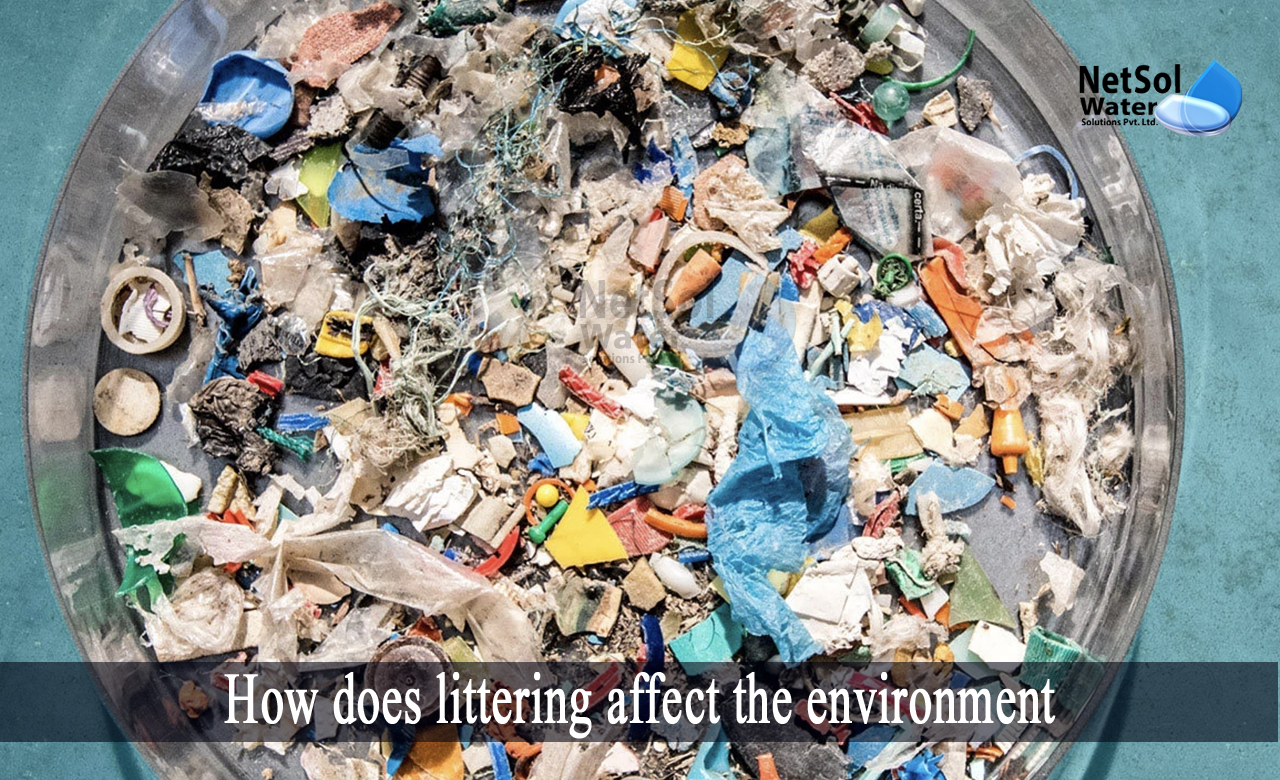How Can Littering Affect The Environment
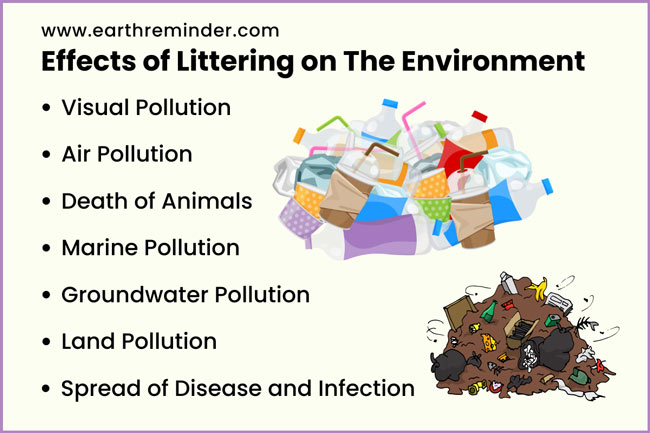
While seemingly unrelated, the pervasive problem of littering has surprisingly significant impacts on your home's energy efficiency and overall environmental footprint. Understanding these connections can motivate smarter consumption habits and investment in energy-saving technologies, ultimately benefiting both your wallet and the planet.
The Unexpected Link: Litter, Landfills, and Energy Consumption
At first glance, a discarded plastic bottle might not scream "higher energy bill." However, the journey of that bottle – from production to disposal – is deeply intertwined with energy consumption. Manufacturing plastic, aluminum, and other common litter materials requires vast amounts of energy, primarily derived from fossil fuels. The more we litter, the greater the demand for new materials, fueling energy-intensive production processes. According to the EPA, manufacturing processes contribute significantly to overall greenhouse gas emissions. Reducing, reusing, and recycling are crucial strategies for reducing this manufacturing energy demand.
The Landfill Effect: Methane and Energy Waste
Litter that isn't recycled ends up in landfills. These landfills are significant sources of methane, a potent greenhouse gas far more effective at trapping heat than carbon dioxide. This contributes to climate change, leading to more extreme weather events. Extreme temperatures mean increased demand for heating and cooling in our homes and businesses, directly impacting our energy bills.
Furthermore, landfills take up vast amounts of land that could be used for other purposes, including renewable energy projects. Every ton of trash that goes to a landfill is a missed opportunity for resource recovery and energy generation.
Direct Impacts on HVAC Efficiency
While the connection might be less obvious, litter can also directly impact the efficiency of your HVAC (Heating, Ventilation, and Air Conditioning) systems. Consider these scenarios:
* **Blocked Drainage Systems:** Litter accumulating near your home can clog drainage systems, leading to water damage. Moisture buildup can damage insulation, reducing its effectiveness and increasing energy loss. Wet insulation loses its ability to properly regulate temperature, resulting in the need for excessive heating or cooling to maintain a comfortable environment indoors. * **Airflow Obstruction:** Debris, especially leaves and plastic bags, can block outdoor HVAC units, reducing airflow. Restricted airflow forces your system to work harder, increasing energy consumption and potentially shortening the lifespan of your equipment. Regularly clearing debris from around your outdoor units is a simple but effective way to improve efficiency. Consider using a programmable thermostat to optimize energy consumption according to your schedule. Energy Star certified thermostats can help you save up to 8% on heating and cooling costs. * **Property Value & Energy Efficiency Upgrades:** Communities with excessive litter often experience depressed property values. This can discourage homeowners from investing in energy-efficient upgrades like new windows, insulation, or high-efficiency HVAC systems. These upgrades, while requiring upfront investment, offer significant long-term savings on energy bills and increase a home's overall value.Investing in high-efficiency HVAC systems can reduce energy consumption by as much as 30%. Look for systems with high SEER (Seasonal Energy Efficiency Ratio) and HSPF (Heating Season Performance Factor) ratings to maximize savings.
Smart Home Integration: Monitoring and Reducing Your Energy Footprint
Integrating smart home technology can help you monitor and reduce your energy footprint, indirectly addressing the impacts of litter. Smart thermostats, for example, learn your heating and cooling preferences and automatically adjust settings to optimize energy usage. This can significantly reduce energy waste, particularly when combined with regular HVAC maintenance and proper insulation.
Consider installing smart sensors to monitor indoor air quality. These sensors can detect drafts or areas with poor insulation, allowing you to address issues that contribute to energy loss. Addressing these issues not only saves energy but also improves indoor air quality.
Smart energy meters provide real-time data on your energy consumption, allowing you to identify areas where you can reduce usage. This data can be particularly helpful in identifying phantom loads – devices that consume energy even when turned off. By unplugging or using smart power strips to eliminate phantom loads, you can further reduce your energy consumption.
Businesses Leading the Way: Sustainable Practices and Energy Efficiency
Businesses have a crucial role to play in reducing litter and promoting energy efficiency. Implementing sustainable practices, such as using recycled materials, reducing packaging waste, and promoting recycling programs, can significantly reduce their environmental impact. Investing in energy-efficient equipment, such as LED lighting and high-efficiency HVAC systems, can also lead to substantial cost savings.
Rebates and Incentives for Energy-Efficient Upgrades
Many local, state, and federal programs offer rebates and incentives for businesses that invest in energy-efficient upgrades. These incentives can significantly reduce the upfront cost of these upgrades, making them even more attractive. For example, the Inflation Reduction Act provides significant tax credits for businesses that invest in renewable energy and energy-efficient technologies.
HVAC contractors can play a vital role in helping businesses identify and implement energy-efficient solutions. By offering energy audits and recommending appropriate equipment upgrades, contractors can help businesses reduce their energy consumption and save money.
Furthermore, businesses can encourage employees to adopt sustainable practices at home, such as reducing waste, conserving energy, and using public transportation. This can create a culture of sustainability that extends beyond the workplace.
Homeowners: Simple Steps for a Sustainable Future
Homeowners can take several simple steps to reduce litter and improve energy efficiency:
* **Reduce, Reuse, Recycle:** This is the cornerstone of waste reduction. Prioritize buying products with minimal packaging, reuse containers whenever possible, and recycle everything you can. * **Proper Waste Disposal:** Ensure that all waste is properly disposed of in designated receptacles. Secure garbage can lids to prevent windblown litter. * **Composting:** Compost food scraps and yard waste to reduce the amount of organic material sent to landfills. Composting also produces nutrient-rich soil that can be used in your garden. * **Energy Audits:** Schedule an energy audit to identify areas in your home where you can improve energy efficiency. Audits can reveal issues such as air leaks, inadequate insulation, and inefficient appliances. * **Weatherization:** Seal air leaks around windows and doors with weather stripping or caulk. Insulate walls, attics, and basements to reduce heat loss in the winter and heat gain in the summer. * **Upgrade Appliances:** Replace old, inefficient appliances with Energy Star certified models. These appliances use significantly less energy than older models. * **Regular HVAC Maintenance:** Schedule regular maintenance for your HVAC system to ensure that it is running efficiently. Clean or replace air filters regularly, and have your system inspected by a qualified technician at least once a year. * **Install a Programmable Thermostat:** A programmable thermostat allows you to set different temperatures for different times of the day, reducing energy waste when you are not at home. * **Landscaping for Energy Efficiency:** Plant trees and shrubs strategically to provide shade in the summer and wind protection in the winter. * **Advocate for Change:** Support policies and initiatives that promote waste reduction, recycling, and energy efficiency in your community.Conclusion: A Collective Effort for a Sustainable Future
The connection between litter and energy efficiency is undeniable. By reducing litter, promoting recycling, and investing in energy-efficient technologies, we can create a more sustainable future for ourselves and future generations. From homeowners to businesses to government agencies, we all have a role to play in this collective effort. Investing in energy-efficient solutions not only reduces our environmental impact but also saves us money on our energy bills. Embrace sustainability, one step at a time.
Remember to check for available rebates and incentives for energy-efficient upgrades in your area. Websites like Energy Star and the Department of Energy offer valuable resources and information on energy efficiency.
